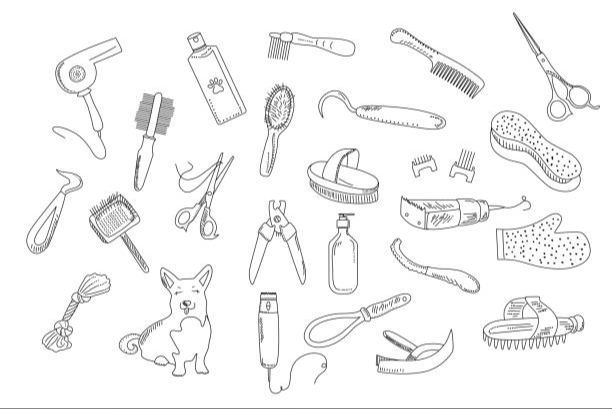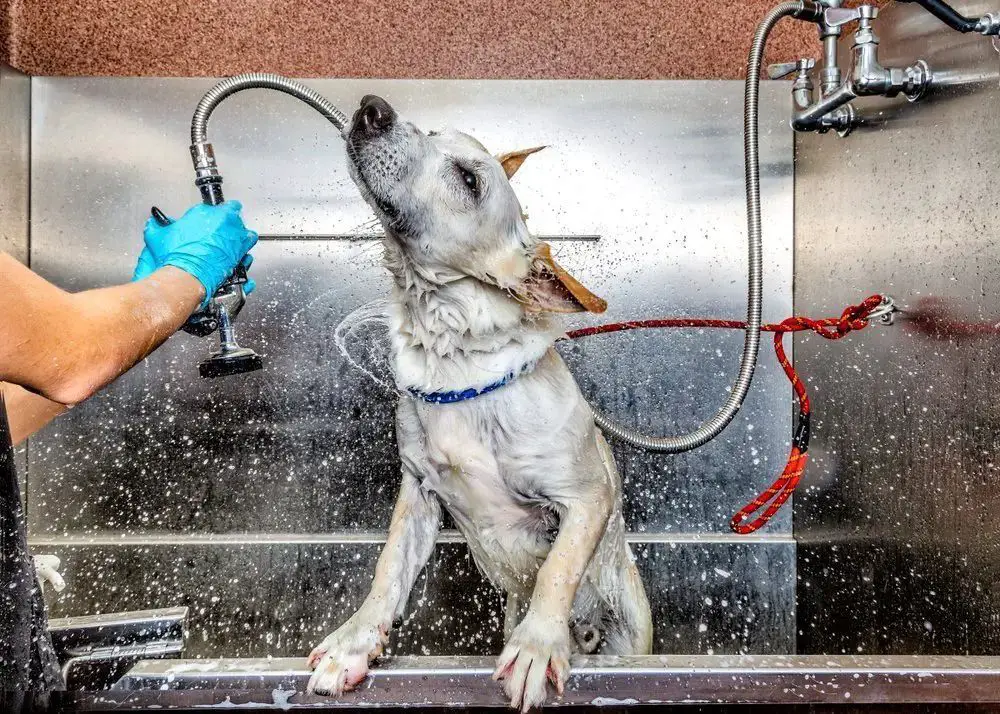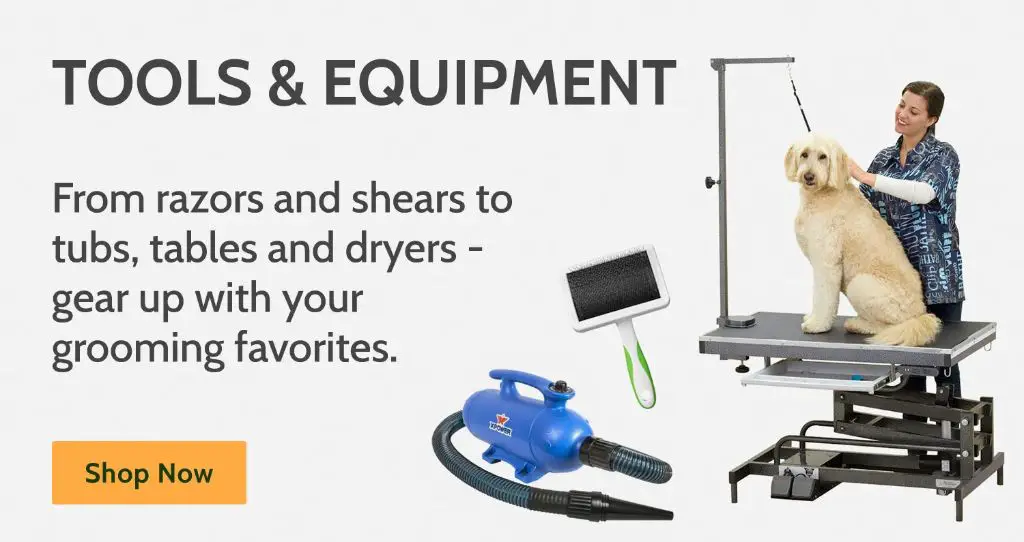Introduction
Dog grooming is a vital industry that provides professional grooming and styling services for dogs. Many dog owners rely on skilled groomers to keep their dogs clean, healthy and looking their best. The industry is made up of companies and independent groomers that offer bathing, haircuts, nail trimming, teeth cleaning, ear cleaning and more for pet dogs.
Professional dog grooming plays an important role in maintaining dogs’ physical and mental health. Regular grooming keeps dogs’ coats and skin in good condition, helps prevent skin issues and infections, and gives groomers a chance to check for signs of health problems. For many dogs, a visit to the groomer also provides much-needed socialization, handling and positive experiences with restraint.
Beyond just hygiene, grooming allows dog owners to maintain their pets’ desired look and style. Stylish haircuts, nail polishes, hair dyes and other services are popular ways owners can pamper their dogs and express themselves through their pets’ appearances.
The dog grooming industry continues to grow as pet ownership rises and owners treat dogs more like family members. Professional groomers with the proper training and skills are in high demand to care for dogs’ grooming needs safely and effectively.
History of Dog Grooming

Dog grooming as a professional service has its origins in the mid-19th century. As dogs became more common as pets and companions rather than just working animals, their owners sought ways to care for their appearance and hygiene.
The first professional dog grooming service is credited to a Belgian man named Henri Leurdal, who opened a grooming salon in Belgium in 1863. Leurdal developed many of the grooming tools and techniques still used today, including scissors designed specifically for dogs, brushes, combs, and early models of clippers.
From Europe, professional dog grooming spread to North America and the rest of the world alongside the growing popularity of dogs as pets. By the early 20th century, dog grooming salons could be found in most major cities in the United States and Europe.
The rise of dog shows also contributed greatly to the professionalization of dog grooming. Owners wanted their dogs to look their best for competitions, fueling demand for grooming services. This led to the development of more advanced grooming skills and styles.
Today professional dog grooming is a thriving global industry, providing an important service to keep pets clean, healthy, and looking their very best.
Services
Dog grooming provides a wide range of services to keep dogs clean, healthy, and looking their best. The main services offered by professional dog groomers include:
Bathing – Dog groomers use specialized shampoos and conditioners to clean the dog’s coat and skin. They bathe dogs in tubs or hydrotherapy tables designed for pets.
Brushing – Regular brushing removes dead hair, distributes oils, and prevents matting of the dog’s coat. Different brushes are used based on the dog’s hair type.
Nail clipping – Trimming a dog’s nails is an important part of grooming. If nails get too long, they can snag and tear. The goal is to clip off just the dead tip of the nail.
Ear cleaning – Groomers gently clean the dog’s ear canals with cotton balls and ear cleaning solution to remove wax buildup and debris.
Teeth brushing – Brushing a dog’s teeth regularly helps prevent tartar buildup and promotes oral health.
Haircuts – Dogs with longer fur get haircuts periodically to shape and trim their coat. The cut depends on the breed and owner’s preference.
Deshedding – Groomers use specialized tools and shampoos to remove excess shedding fur from heavy shedders.
Providing these services helps keep dogs looking and feeling their best. Professional groomers are trained to properly and safely perform grooming techniques.
Employees
The most common positions in the dog grooming industry are:
- Groomers – The groomers are responsible for bathing, brushing, clipping, trimming, and styling dogs’ coats. They need expertise in handling dogs safely and using grooming tools and products. Groomers often specialize in certain breeds or services.
- Assistants – Assistants help the groomers by bathing, drying, and preparing the dogs before grooming. They may also clean the grooming areas and equipment. No formal training is required to be an assistant.
- Receptionists – The receptionists handle administrative tasks like booking appointments, answering calls, checking in clients and pets, handling payments, and managing records. They are usually the first point of contact at a grooming business.

Some salons may also employ kennel attendants to care for the dogs before and after grooming. Larger establishments may have managers, trainers, and other support roles too.
Salaries
Groomer salaries vary depending on experience, location, whether the groomer works full or part-time, and the type of facility. According to the Bureau of Labor Statistics, the average salary for groomers in the United States in 2021 was $25,970 per year or $12.48 per hour. The lowest paid 10% of groomers earned less than $18,390, while the highest paid 10% earned more than $36,560.
Groomers that work in high-end salons and boutiques in metropolitan areas tend to earn higher wages, from $40,000 to $60,000 per year. Mobile grooming businesses, which visit customers’ homes, also typically pay more since they charge a premium for that convenience. Groomers working part-time or as entry-level bathers at corporate chains and pet stores earn lower wages, closer to minimum wage. commissions may supplement their income.
In addition to groomers, salons employ receptionists, kennel technicians, and managers. According to PayScale, average salaries for these positions range from $22,000 to $50,000 per year. Managers at upscale salons can potentially earn over $100,000 annually. Shop owners also have earning potential well over $100,000, but their income depends heavily on the success of their business.
Equipment

A dog grooming salon requires specialized equipment to properly bathe, brush, trim and style a dog’s coat and nails. Some of the key pieces of equipment include:
Clippers – Professional clippers allow groomers to trim a dog’s fur to a uniform length. There are different types of blades and clipper sizes to suit dogs of different breeds and coat types.
Brushes – Groomers use a variety of brushes such as slicker brushes, bristle brushes, de-matting brushes and rakes to brush out tangles, smooth coats, and remove loose hair.
Shampoo – Dog shampoos are formulated to be gentle on a dog’s sensitive skin. Medicated shampoos help treat skin conditions. Conditioners make brushing easier.
Bathing tubs – Tubs allow the groomer to thoroughly wet, lather, rinse and dry the dog.
Grooming tables – Sturdy non-slip tables keep dogs secure and provide a work surface for groomers. Tables are adjustable to suit the dog’s height.
Nail trimmers – Guarded trimmers help safely trim dogs’ nails so they don’t get too long.
Having the right gear allows professional groomers to properly clean and style a dog’s coat.
Setting
Dog grooming businesses operate in a variety of settings including storefronts, mobile grooming vans, and private homes. Here is an overview of the most common settings for dog grooming services:
Storefronts
The most traditional setting for dog grooming is a storefront location. These may be standalone businesses or located within pet supply retail stores. Storefronts allow groomers to setup permanent stations with plumbing and electricity for equipment like bathtubs, dryers and clippers. Storefronts also provide a waiting area for pet owners along with retail space to sell grooming products.
Mobile Grooming
Mobile dog grooming has become popular in recent years. Groomers operate out of large vans outfitted with equipment and water tanks. They travel to their clients’ homes or places of business to provide grooming services. This offers convenience for pet owners along with flexibility for groomers to serve a wider geographic area.
Home-Based
Some professional dog groomers work out of their private homes. This allows them to operate with less overhead costs than a storefront, while offering pet owners a more intimate setting. Home-based groomers must meet zoning requirements and obtain a business license to operate legally out of a residence.
Whether in a fixed storefront, mobile van or private home, professional dog groomers require adequate space for their equipment, tools and pet grooming stations. Safety, sanitation and convenience for both pets and their owners are also important considerations in any dog grooming business location.
Regulations
The dog grooming industry is regulated in several ways to ensure the health and safety of pets. Groomers must comply with licensing requirements, health codes, and other rules.
In most states, dog groomers are required to obtain a license or certification before opening a business. This involves completing a training program and passing an exam on proper grooming procedures, animal health and anatomy, and business practices. Maintaining a valid license requires groomers to complete continuing education.
Grooming facilities must adhere to health codes for sanitation. This includes proper cleaning and disinfection of equipment, work spaces, and kennels. Proper ventilation, lighting, waste disposal, and pest control are also mandated. Shops are subject to inspection by health departments.
Legal requirements also relate to the use of restraints, sedatives, and handling practices to ensure the safety and wellbeing of dogs during grooming. Any injuries or accidents must be reported. Records on vaccinations may need to be maintained.
Knowing the laws and regulations is crucial for dog grooming businesses. Staying current on any changes to licensing, health codes, and standards of care allows shops to operate legally and provides quality services.
Trends
The dog grooming industry has seen several notable trends in recent years:

Mobile grooming – Mobile grooming vans and trailers have become increasingly popular, allowing groomers to travel directly to their clients. This provides convenience for pet owners and expands the client base for groomers.
All-natural products – There is growing demand for all-natural grooming products like shampoos and conditioners made with organic ingredients. Many groomers now offer these options to appeal to environmentally conscious pet owners.
Premium services – Along with mobile options, groomers are offering more upscale services like blueberry facials, hair dyeing, nail polishing and hair clipping. These premium services allow groomers to charge more and boost their profits.
Self-service dog washes – More pet stores and groomers are installing self-service dog wash stations for convenient basic cleaning between full grooming sessions. These allow DIY owners to handle some basic grooming tasks.
Advanced education – Groomers are increasingly taking advanced courses to improve their skills and knowledge. Certifications in areas like pet first aid allow them to provide specialized services.
Outlook
The outlook for the dog grooming industry is one of continued growth and opportunity. As the number of pet dogs continues to increase, so too will the demand for professional grooming services. However, the industry does face some challenges.
Industry revenue is projected to grow over the next five years as more pet owners utilize professional groomers. With busy lifestyles, many dog owners find it convenient to use a groomer regularly. The industry will also benefit from growth in higher-priced luxury services like massage therapy, blueberry facials, and breed-specific haircuts. However, competition is increasing as more entrepreneurs enter the business. Shop and franchise saturation in some areas could limit future growth.
The industry is also facing a shortage of qualified groomers. Attracting skilled labor and training new groomers will be an ongoing challenge. Providing competitive pay, benefits, and good working conditions will be key to recruitment and retention. Developing apprenticeship programs could create a pipeline of new talent.
Overall, the continued humanization of pets and the willingness of owners to spend money on their dogs creates a positive outlook. The industry is well-positioned to grow if businesses can attract and retain talented groomers. By focusing on customer service, quality, and safety, dog grooming can remain a thriving small business sector.